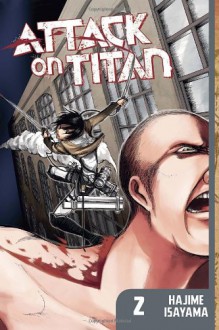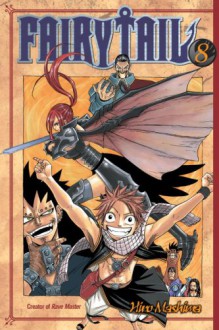
Story-wise, I thought this volume was a bit better than the first. Unfortunately, the story is still crippled by its terrible art. If I hadn't already seen the anime, I would likely have wasted a lot of time trying to figure out what was happening in certain panels and what had happened from one panel to the next. I really hate Isayama's overly dark, sketchy art style.
If you've seen the anime, there's almost nothing in this volume that will be new to you. The only potentially new thing I spotted was a moment during a flashback explaining Mikasa's backstory. Mikasa has a brand on her wrist that is passed down from generation to generation in her family (or at least on her mother's side). It's hard to tell whether it will end up being important, or if it was just Mikasa's mother's family's way of signifying “we are the last of the Asians.”
In the first half of the volume, the most interesting things were finding out Mikasa's backstory and seeing her in action. She's awesome and takes no crap from anyone (except possibly Eren). I found the ease with which Child Eren
murdered several grown men to be just as disturbing in the manga as in the anime. No hesitation, no doubt, just “they are animals and they must die.”
The second half of the volume has one of my favorite moments, the first appearance of
the Titan-killing Titan.
Unfortunately, again, it was crippled by the bad art. I'd honestly rather re-watch that portion of the anime than re-read it in the manga.
I will continue reading this series because I want to get to stuff that hasn't been shown in the anime. I hope it will eventually become more enjoyable.
Extras:
Several pages of Attack on Titan world-related information: an illustration of the extent of territory left to the human race; illustrations of the wall-mounted artillery and its ammo; and an illustration of the relative scale of the various types of Titans vs. a soldier and a building. Also included is a rejected cover proposal sketch.
(Original review, with read-alikes and watch-alikes, posted on A Library Girl's Familiar Diversions.)

 Log in with Facebook
Log in with Facebook 











